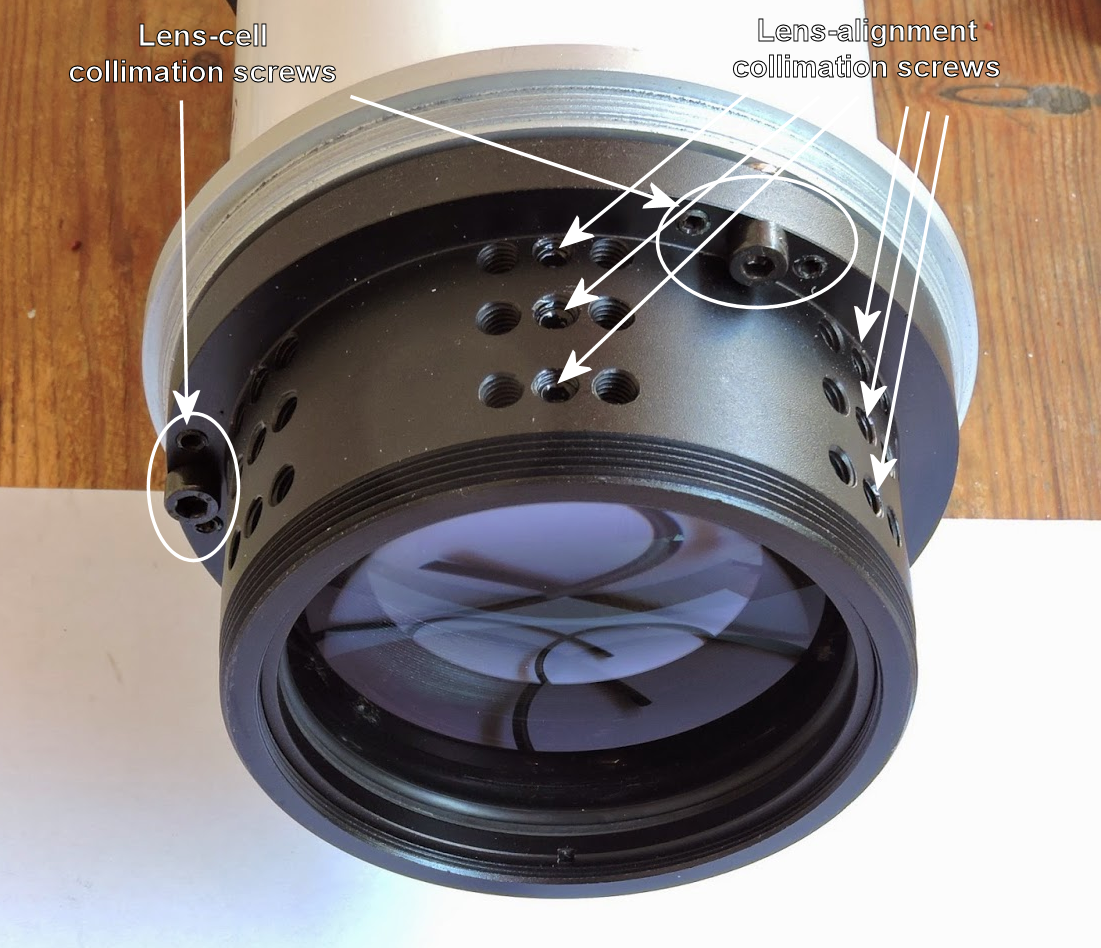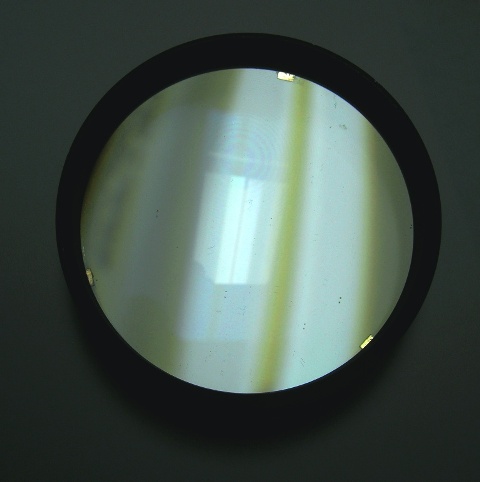
Andyy
-
Posts
51 -
Joined
-
Last visited
Content Type
Profiles
Forums
Gallery
Events
Blogs
Posts posted by Andyy
-
-
3 minutes ago, teoria_del_big_bang said:
It should re-centre to same position as before the flip, only just started using NINA but most software tries to platesolve to same coordinates as the images before the flip.
Steve
Perfect!
-
15 minutes ago, scotty38 said:
It is an option that needs to be set on - "Recenter after Flip" in Options/Imaging
Thanks! The setting is "ON"
But what happens then if I've used frame wizard and framed slightly off target center
-
 1
1
-
-
15 minutes ago, teoria_del_big_bang said:
If not plate solving after the flip I am amazed it is not more severe.
I take it you do not have a rotator and so the images were upside down after the flip ?
If so them just as @ONIKKINEN says there will be some error after the flip.
Steve
I'm pretty sure NINA plate solves after meridian flip. I thought maybe it was an operator error but seems like a common issue:
-
 1
1
-
-
18 minutes ago, ONIKKINEN said:
Some rotation after a meridian flip should be expected. If your polar alignment is less than perfect = which it almost always is, your DEC and RA are not perfectly 90 degrees from each other (also the case), your camera is not perfectly level etc you will have this kind of rotation.
This looks pretty mild to me actually.
Good to know. Almost never do meridian flip

-
 1
1
-
-
18 minutes ago, scotty38 said:
Is there any chance the camera has moved of its own accord?
There is no way this can happen. It's screw connection and it is very tight. I've checked
-
 1
1
-
-
8 minutes ago, scotty38 said:
Looks like the framing is rotated slightly after the flip, did you plate solve etc afterwards? No idea if this is the reason just wondering....
Yes, exactly but I did not touch camera (or mount). NINA did the automatic flip. I did not plate solve after flip
-
 1
1
-
-
Uneven black border around image after stacking. A thin black border due to dithering is ok, but is this normal?
It happens last night when doing automatic meridian flip in NINA. I've stacked subs before and after meridian flip and only show a small thin border caused by dithering. Only when I stack all subs toghether I get this result.
-
 1
1
-
-
15 hours ago, alacant said:
Small amounts are fine.
Post a shot
- looking centrally down the focuser
- through your Cheshire crosshairs
Thanks! I’ll start all over with the secondary tonight. It’s almost there now! I’m not a beginner in this hobby, just beginner with newtonians

Thanks again @alacant you are a great resource here!
-
27 minutes ago, alacant said:
Remember that other than reflection, the secondary has no optical properties. It's just a flat mirror.
Correct offset is inherent when the secondary is correctly centered on modern Newtonians. You don't need to set it.
Be sure to read the collimation myths. Both telia and seronik tell it exactly as it is.
Cheers
@alacant The Telia-linkis broken…
I tilted the mirror upwards to center the reflection in the mirror under the focuser. Isn’t it best to keep the secondary mirror stalk straight and «paralell»to the primary mirror?
…or it will result in this, either left or right. In my case; up or down.

-
Used a mirror and inspected the secondary stalk and found the secondary mirror was slightly tilted upwards towards the focuser. This might explain the uneven field.
I’ve spent a lot of time trying to center the secondary under the focuser with an offset. I’m not sure if I’m quite there, and may have tilted the secondary mirror because of this (to compensate).
Feel free to chime in if you have a good technique for centering the secondary mirror with an offset without causing tilt!
-
Got all necessary collimation tools and collimation looks spot on. Vignetting is remove with calibration. Star field look even and stars are round all the way to the corners. Probably just a hair off regarding tilt.
«Problem» is that I’m a perfectionist

-
4 minutes ago, alacant said:
You need to adjust tilt and collimation until the vignetting is more evenly distributed; central with dark corners is good.
Does your software rotate the images?
Collimation looks perfect but the vignetting is still uneven. I’ll give collimation another try!
camera is rotated physically not with software.
-
7 minutes ago, alacant said:
The vignetting should be central so something is not square. Collimate, tighten, dismantle, secure main mirror...
Unless you have patience, the flats are working and you have decent stars, probably best to just leave it.
Cheers
Lets say the the secondary is tilted causing vignetting on one side of sensor then wouldn’t the vignetting be stationary on that same side/place independent of sensor orientation?
-
4 minutes ago, alacant said:
All OK then:)
The vignetting pattern is still stronger (darker) on one side than the other. If you see my drawing there is to different shades of gray (top and bottom).
Pattern is following the top part of the sensor as it turn around 180 degrees.
-
14 minutes ago, alacant said:
Hi
360º, so you're back to where you started. The vignetting should be the same. Same for all filters, so not the filters. Not tested without coma corrector, so we don't know if that's the issue...
Our money is on the camera not being replaced at the same angle after rotation; we've never come across a Newtonian focuser out of the box which didn't tilt, threaded connections or not.
But you wouldn't rotate the camera after an imaging session before taking flat frames so if the flats are working...
Cheers
Sorry, correction camera is rotated 180 degrees of course. My bad, it was late…
I think the problem is camera-side (most likely coma corrector) not collimation.
-
28 minutes ago, andrew s said:
This first thing I would do is check the secondary is correctly centered under the focuser. Regards Andrew
If the secondary mirror is the problem, wouldn’t the vignetting pattern stay the same even when camera is rotated?
-
As seen on laptop screen:

Camera and coma corrector is rotated together.I can also see the same vignetting pattern on a singel light frame. I use filters with filterwheel. Pattern is same for all filters.
-
Help my flats are uneven with newtonian. The flats are darker on right side than left side (horizontally) but flips when I turn my camera 180 degrees. What does that say me?
I need Help thinking I can't get me head around

-
9 hours ago, markse68 said:
I think the prism should be orientated so that it sits on one of the long sides of the sensor frame where it’s least likely to vignette. Is it aligned to the corner that’s vignetting currently? Can you rotate it?
Mark
Tried that did help very very slightly but I think there is something else going on here. Most likely collimation...
Update: Collimation fixed it!
-
Hi! I've been using OAG for a long time now, but recently moved from 1.25" filter to 31mm for my 4/3 sensor. Now my OAG prism stalk cause slight vignetting (shadow) in one of the corners. My question is does this shadow calibrate out with flats or do I have to move the prism?
-
I came over this thread which relate to your problem: AT60ED - pinched optics? - Beginning Deep Sky Imaging - Cloudy Nights
A possible solution is described on page 2 of this thread.
-
3 hours ago, inFINNity Deck said:
I have seen multiple Esprit 80EDs with pinched optics and the company in the link I posted earlier today has seen several as well, they even have designed a new lens-cell for SkyWatcher to mitigate the issue.
An aperture mask may indeed remove certain artefacts as I described above (last Friday at 21:11). But the aperture should be extremely smooth to avoid new artefacts arising as I shown in that article. I made mine of aluminium and polished it.
Nicolàs
To be clear my understanding of pinched optics is that something mechanical puts stress on glass and cause artifacts usually triangular star shapes.
Pinched optics I have seen on Esprit but not mechanical parts protuding into the light path.
It doesen’t suprise me though these cheap scopes all have their quirks. Some more expensive ones have them too…
We are at pixel peeping level here… I want to say great image @Philip Terry keep up the good work!
-
 1
1
-
-
16 minutes ago, Philip Terry said:
Thanks Andyy and Nicolàs. It certainly seems to be temperature-dependent; I tried Nicolàs's experiment of imaging straight after taking the scope outdoors, and there was no sign of the dark beams. They crept back subtly as the night progressed. No trefoil-ish shapes either. Fits with the late Summer images being free from the effect. I won't mess with the cell screws, I'm not looking for perfection!
Use aperture mask. I used a 3D-printer to make one, but for testing just make one out of cardboard. This will help on star shape.
-
20 minutes ago, inFINNity Deck said:
Hi Andy,
perhaps the following article is good to read: http://interferometrie.blogspot.com/2014/08/esprit-tuning-how-we-finetune-esprit80.html
As can be seen there are two types of collimation screws:
So the lens-cell collimation screws are the ones that hold the lens-cell and are there to be able to set the whole lens-cell perpendicular to the optical axis. The Lens-alignment collimation screws (here they are in sets of 3 as this is a triplet) are there to hold the lenses in places and to arrange their mutual alignment within the lens-cell. In neither case is it possible that those screws enter the light path. The lens-cell collimation screws are not even within the tube and are parallel to the optical axis. The lens-alignment collimation screws do move inwards, but cannot enter the light path as if that were the case, light could pass between the lens-cell and the lens (or the lens is missing).
What some manufacturers do, is using small spacers between the lenses (taken from https://www.cloudynights.com/topic/647909-refractor-doublet-lens-spacer-material/):
These are able to protrude within the light path if not well cut and/or placed. They can also explain why the dark spikes are only 2 obvious ones and that they are not separated by 120 degrees.
Nicolàs
The Esprit does not have this problem not that I know of anyway. We agree something is entering the light path causing the artifact maybe spacers. It’s not serviceable by the end user.
I made a aperture mask on my telescope to fix the problem. It made the telescope slightly slower but stars were nice and round.











Square stars!
in Getting Started With Imaging
Posted
This is a very common problem with WO and other telescopes made by the same manufacturer under different names. It’s well documented online in several different forums. If I remember correctly it’s something to do with how the lens cells are retained inside the OTA. The problem gets worse in cold weather.